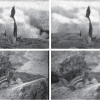1401 search results - page 238 / 281 » Randomness in Interactive Proofs |
103
click to vote
CVPR
2009
IEEE
16 years 4 months ago
2009
IEEE
We introduce a new technique that can reduce any
higher-order Markov random field with binary labels into
a first-order one that has the same minima as the original.
Moreover, w...
119
click to vote
ICCV
2009
IEEE
16 years 2 months ago
2009
IEEE
We present a method for tracking a hand while it is interacting
with an object. This setting is arguably the one where
hand-tracking has most practical relevance, but poses signi...
96
Voted
CVPR
2007
IEEE
15 years 11 months ago
2007
IEEE
We describe a probabilistic framework for recognizing human activities in monocular video based on simple silhouette observations in this paper. The methodology combines kernel pr...
ICCV
2007
IEEE
15 years 11 months ago
2007
IEEE
We present a unified method for simultaneously acquiring both the location and the silhouette shape of people in outdoor scenes. The proposed algorithm integrates top-down and bot...
102
click to vote
ECCV
2008
Springer
15 years 11 months ago
2008
Springer
This paper presents GeoS, a new algorithm for the efficient segmentation of n-dimensional image and video data. The segmentation problem is cast as approximate energy minimization ...

